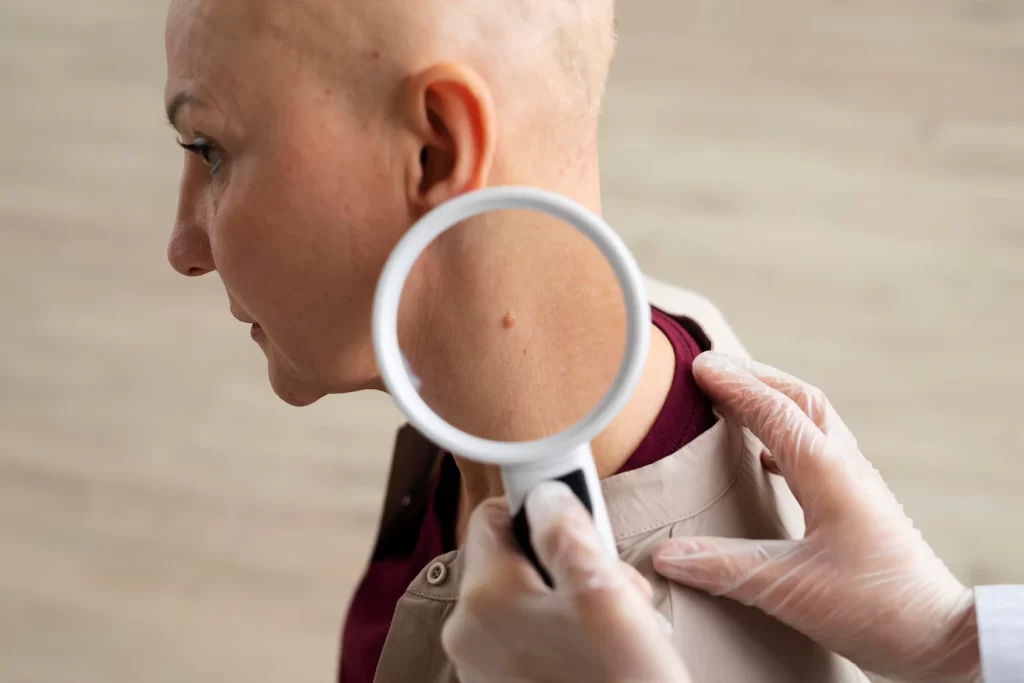Skin Cancer Screening

Skin cancer screening involves examining the skin for any suspicious moles or other growths that may be indicative of skin cancer. Here are some things to know about skin cancer screening:
- Self-examination: It’s important to perform regular self-examinations of your skin, looking for any new or changing moles or growths. You should also be aware of any skin changes that don’t heal, or any spots that bleed, itch, or hurt. If you notice any concerning changes, make an appointment with a dermatologist.
- Professional exam: A dermatologist can perform a full skin examination, looking for any suspicious spots that may indicate skin cancer. The dermatologist may use a dermatoscope a special instrument that helps magnify and illuminate the skin, to get a closer look at any suspicious spots.
- Skin biopsy: If a suspicious spot is found, a skin biopsy may be performed to determine if it is cancerous. During a biopsy, a small sample of skin is removed and sent to a lab for testing.
The American Academy of Dermatology (AAD) recommends that all adults have a full-body skin exam by a dermatologist at least once a year, particularly if you have a history of skin cancer or other risk factors such as a family history of the disease or frequent sun exposure. It’s also important to wear protective clothing and sunscreen, and to avoid tanning beds and excessive sun exposure.
